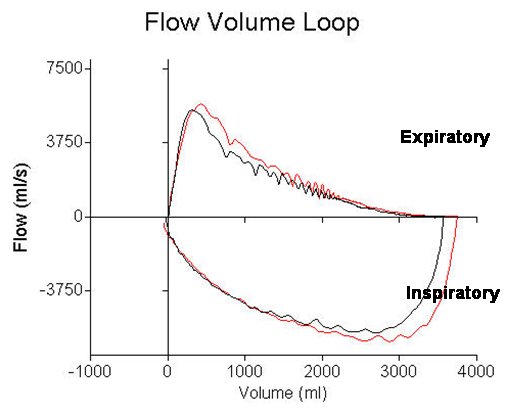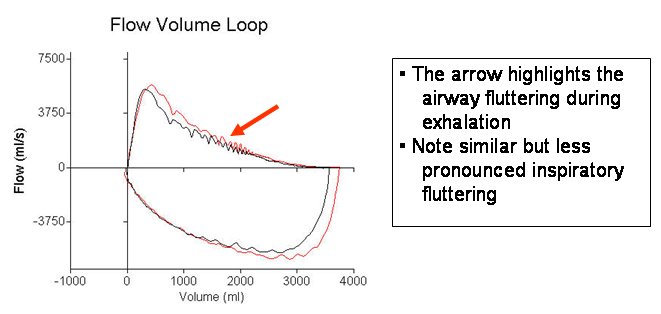Contributed by Charles Atwood, MD, VA Pittsburgh Healthcare System and the University of Pittsburgh Medical Center, Pittsburg, PA
The expiratory limb of the flow volume loop shows fluttering in the mid-flow portion. This vibratory motion of the soft palate is known as the “sawtooth” sign. Originally described by Sanders et al (JAMA 1981;245:2414-18), sawtoothing was observed to be fluttering of the soft palate during OSA; it was seen in 11/13 of subjects in their first description of the phenomenon. Subsequent studies have shown that the sign has a lower sensitivity and specificity for sleep apnea than the original report (Shore and Millman, Thorax, 1984;39:775-9). Shore and Millman also showed that physician agreement about when sawtoothing is present on a flow-volume curve is variable and this will affect sensitivity and specificity of the finding.
Contemporary pulmonary function testing equipment tends to “smooth” the expiratory fluttering that is characteristic of the phenomenon. The absence of sawtoothing does not exclude sleep apnea and neither does its presence rule-it in; if present, sawtoothing should prompt a clinician to consider OSA and consider further testing.





